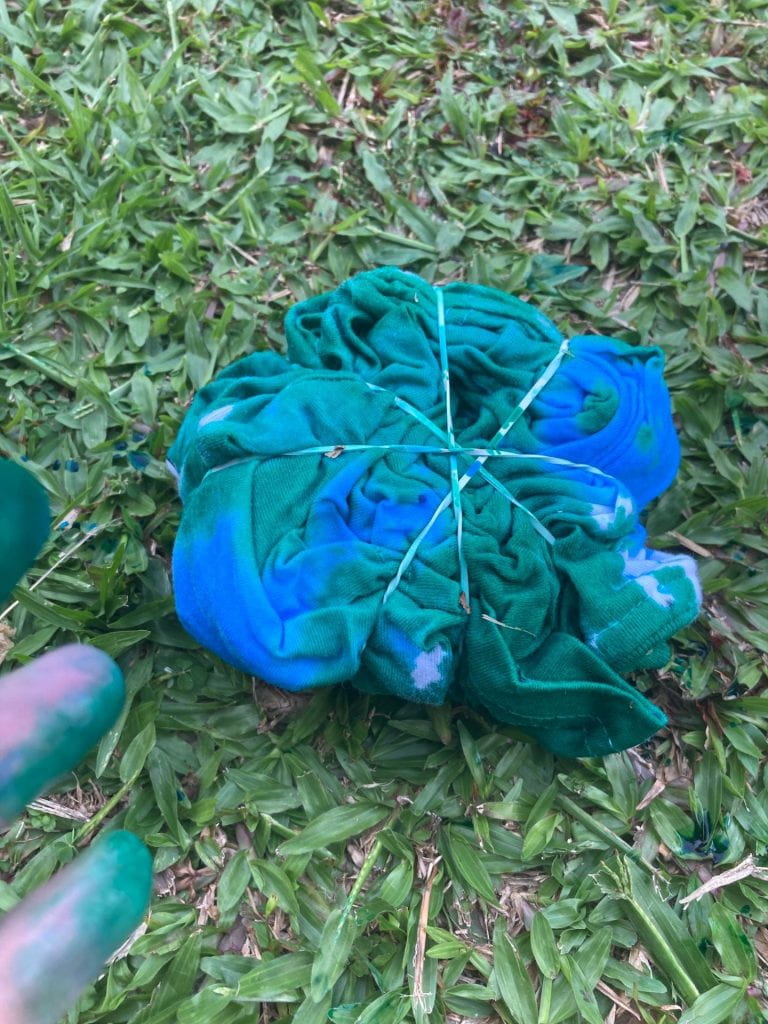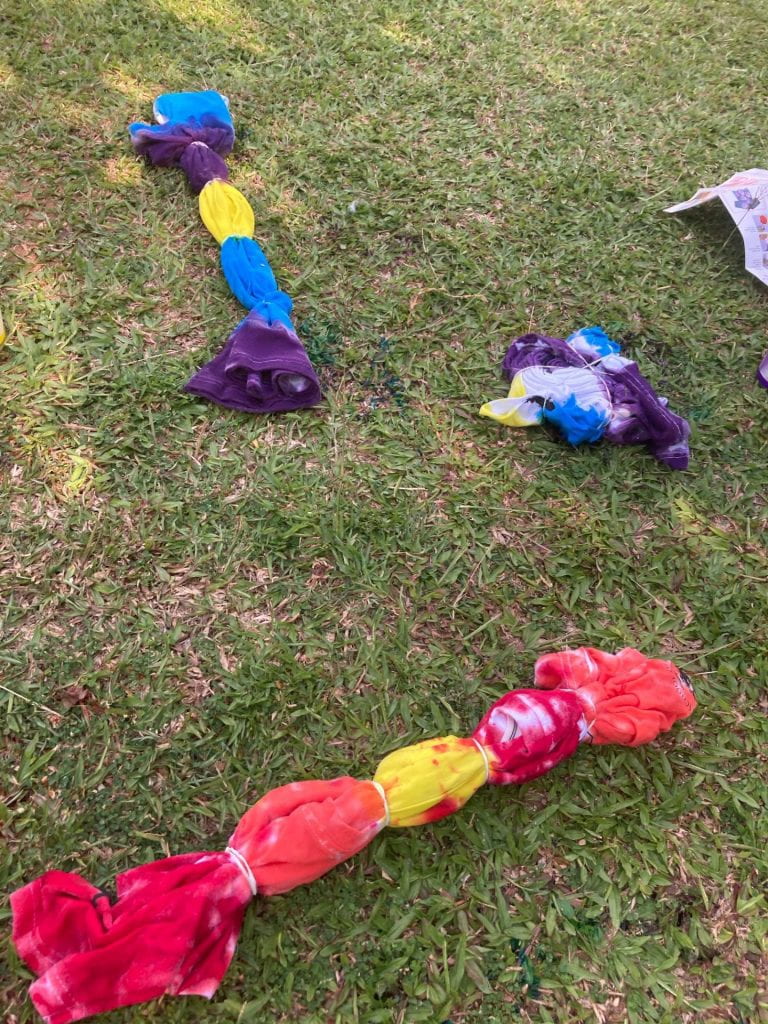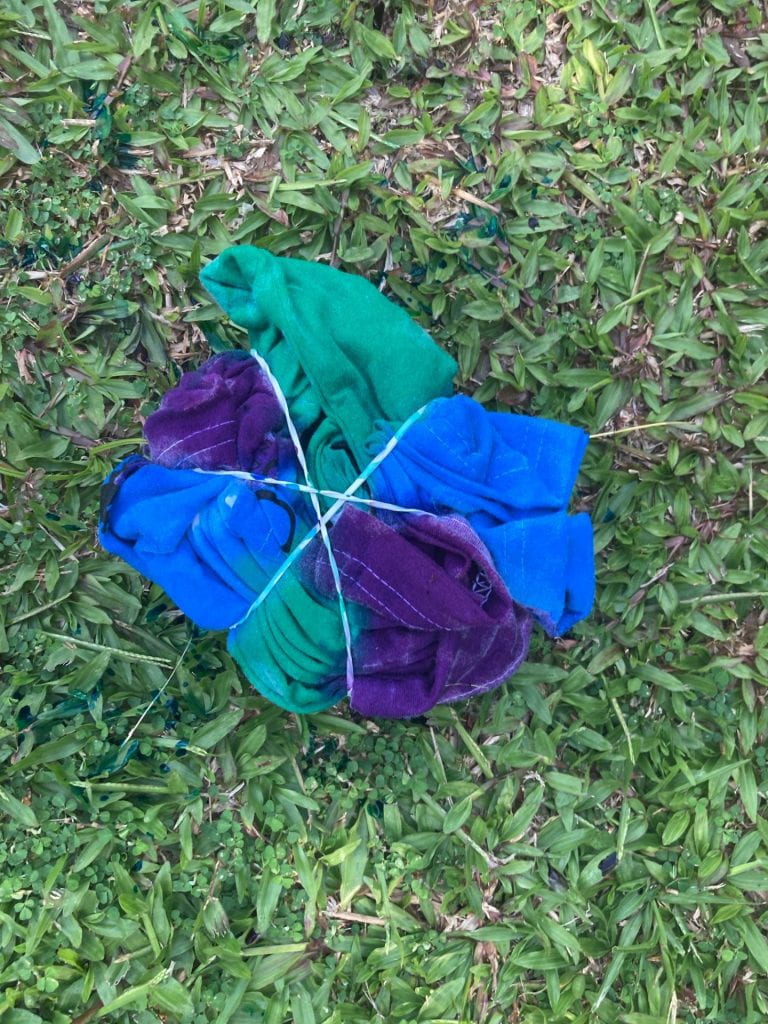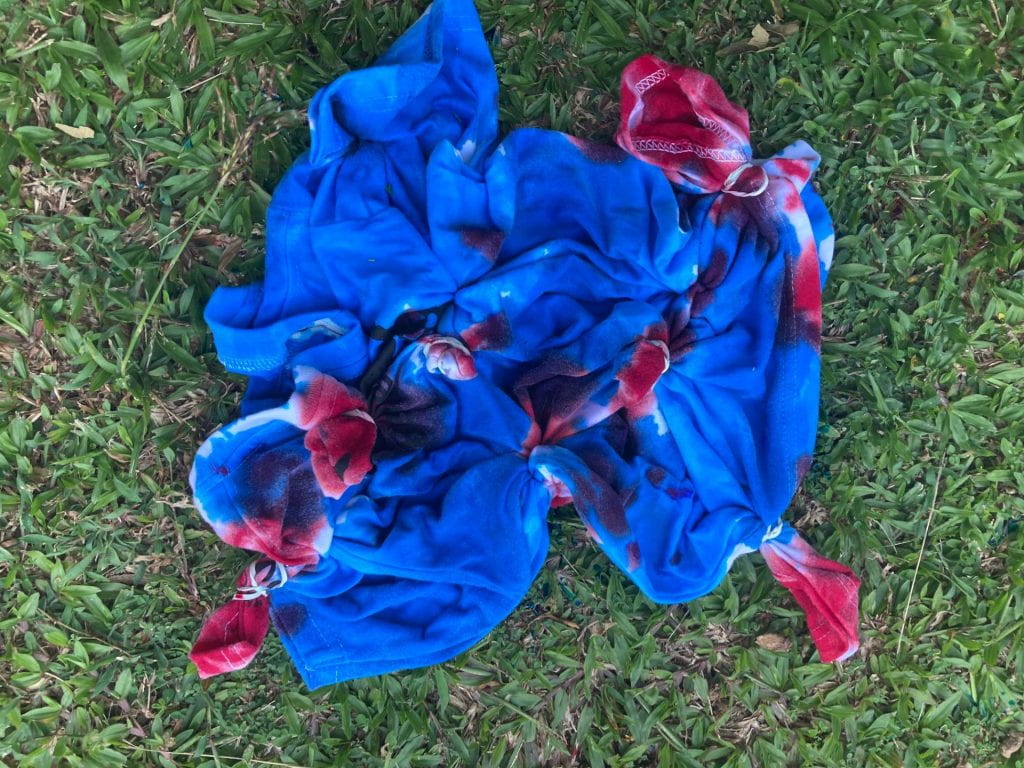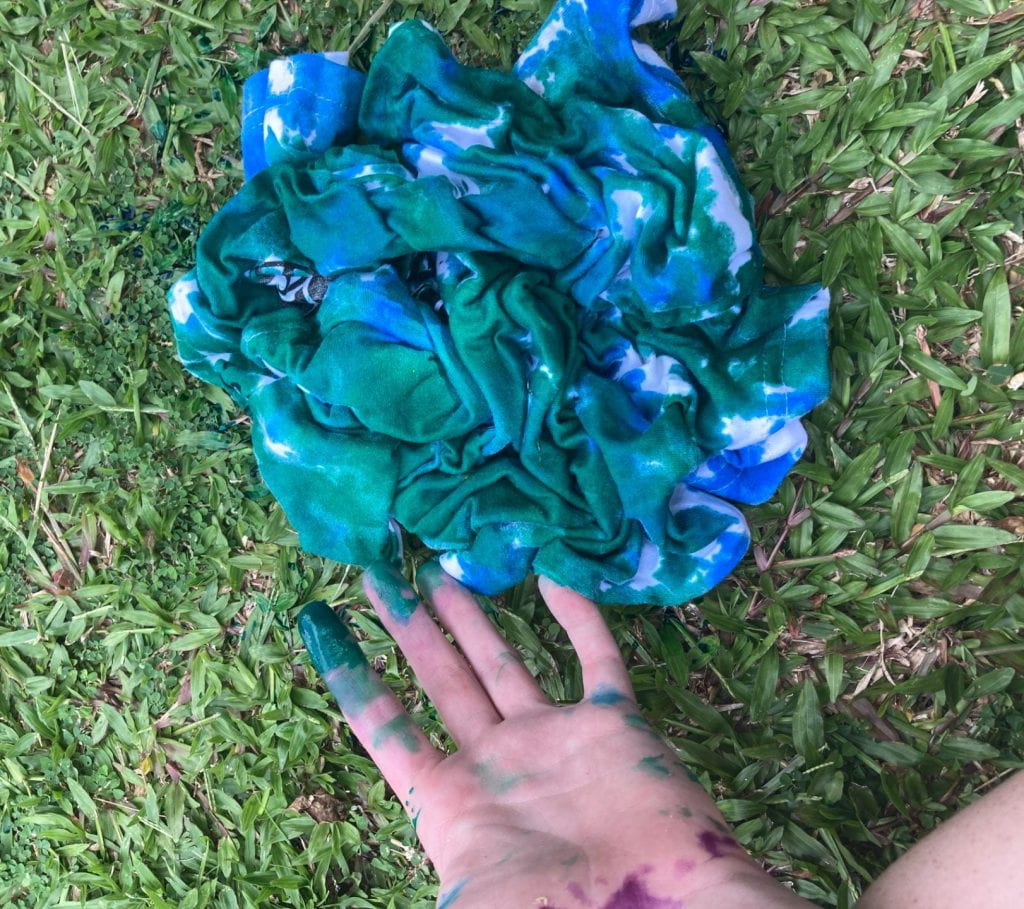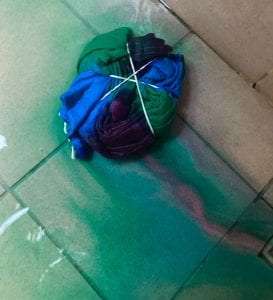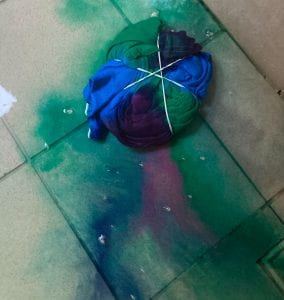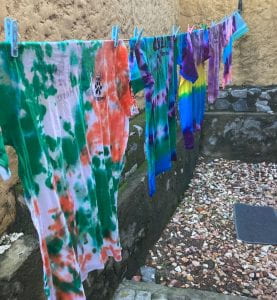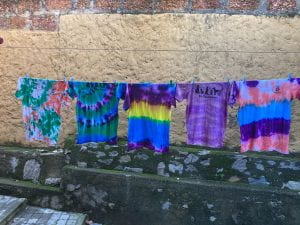LO3 Demonstrate how to initiate and plan a CAS experience Students can articulate the stages from conceiving an idea to executing a plan for a CAS experience or series of CAS experiences. This may be accomplished in collaboration with other participants. Students may show their knowledge and awareness by building on a previous experience, or by launching a new idea or process.
In order to raise money for either this year’s or next year’s sterilization and vaccination camp for dogs and cats, my service group; Care for Paws has decided (last year) to buy plain white T-Shirts, and clothing dye, in order to hand-tye-dye the Care for Paws shirt. Making and selling these shirts will help raise enough money to host and sterilize many different dogs and cats in our next sterilization camp (whenever it is possible to do one). Last year, we had planned to do this as a service, but due to the COVID-19 lockdown, we had to postpone the event. Fortunately, there was a small amount of time this year when we were allowed at school, and during this time COVID had gotten better, we took the opportunity to dye the shirts we bought last year, and to dye them. We all communicate with each other for a couple of weeks, trying to find a suitable date where most members were free to dye the shirts.
LO5 Demonstrate the skills and recognize the benefits of working collaboratively Students are able to identify, demonstrate and critically discuss the benefits and challenges of collaboration gained through CAS experiences.
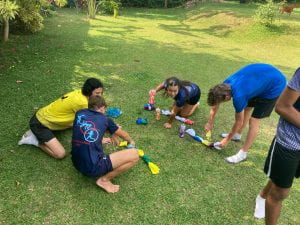 Thankfully, Josh had kindly volunteered their house for all of us to do the tie-dying at. This was super useful, as they have a large yard with lots of space to do the dying. It was also very helpful to have many people in the Care for Paws service group participating in the dying of the shirts. I found that working collaboratively with my group made this whole process so much easier. People like Yangki and Josh both had previous experience of tie-dying before, so it was extremely helpful to have people to guide the first-timers (like me) and help us make shirts that actually looked nice. It was a very quick process – something we have originally planned to take around 1-2 hours but only took around 30 minutes. I am sure this is because there were so many people helping us. At first, working together was a bit of a challenge as in the beginning, we were directionless, and we were not quite sure how to get started. However, after unwrapping the shirts and doing a test shirt, we got into a good rhythm. Some people focused on only folding, and some people did only dying. Some people even did both. Having different mini-stations really helped us. collaboration was also essential for the final part of the process. This is because it takes so long to wash and dry the shirts out at the end. So, having many people there to take some shirts home to wash was really helpful.
Thankfully, Josh had kindly volunteered their house for all of us to do the tie-dying at. This was super useful, as they have a large yard with lots of space to do the dying. It was also very helpful to have many people in the Care for Paws service group participating in the dying of the shirts. I found that working collaboratively with my group made this whole process so much easier. People like Yangki and Josh both had previous experience of tie-dying before, so it was extremely helpful to have people to guide the first-timers (like me) and help us make shirts that actually looked nice. It was a very quick process – something we have originally planned to take around 1-2 hours but only took around 30 minutes. I am sure this is because there were so many people helping us. At first, working together was a bit of a challenge as in the beginning, we were directionless, and we were not quite sure how to get started. However, after unwrapping the shirts and doing a test shirt, we got into a good rhythm. Some people focused on only folding, and some people did only dying. Some people even did both. Having different mini-stations really helped us. collaboration was also essential for the final part of the process. This is because it takes so long to wash and dry the shirts out at the end. So, having many people there to take some shirts home to wash was really helpful.
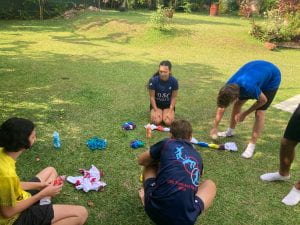 LO2 Demonstrate that challenges have been undertaken, developing new skills in the process A new challenge may be an unfamiliar experience or an extension of an existing one. The newly acquired or developed skills may be shown through experiences that the student has not previously undertaken or through increased expertise in an established area.
LO2 Demonstrate that challenges have been undertaken, developing new skills in the process A new challenge may be an unfamiliar experience or an extension of an existing one. The newly acquired or developed skills may be shown through experiences that the student has not previously undertaken or through increased expertise in an established area.
There were many challenges undertaken during this whole process and many new skills were developed. One of the new skills that I had developed was learning how to tie-dye shirts in the first place. I had never dyed a shirt before using tie-dye, and this was my first time.
First, the CFP members took all the plastic off the shirts and saved them for setting the shirts in later. Then, the first step to do for making the shirts is folding them, in various patterns depending on how they will turn out. This was a newly developed skill for me, as I had never learned how to tie shirts before, in a way that they can be dyed in. I learned that for a swirly tie-dye pattern, you have to swirl the shirt, and similar things for a scrunched up-spotty pattern, and a stripy pattern. Here are photos of me learning how to do the new skill of tieing shirts ready for tie-dye.
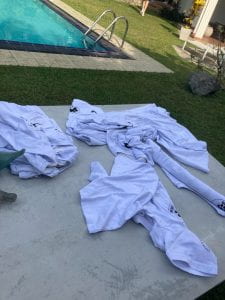
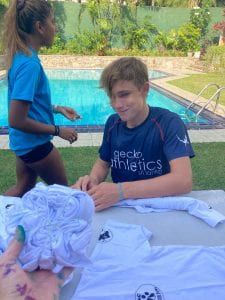

Then, the next skills that I newly acquired regarding tie-dye are how to dye the shirts themselves, and how to apply the dye. To do this, various different patterns and colours were applied to the white shirts, soaking them all the way through and doing the same on the opposite sides. This is also a new skill that I acquired through this experience, that I didn’t know how to do before this service activity.
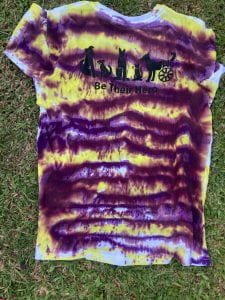 However, there were also quite a few challenges that I faced during this process as well. This interesting (to say the least) shirt on the left was one of these challenges that I personally faced. For some reason, I had thought it would be really cool to free-hand one of the shirts, without tying it up. I just got yellow dye and squirted it on a shirt in a zig-zag pattern that I thought would look cool. And then (this is where the challenging part comes…) I decided that it would look nice with purple on top of the yellow. Due to my art class, I did know that they were complementary colours and therefore do not mix well. However, this thought did not seem to cross my mind as I made this horrendous-looking shirt. After realizing how bad it looked, I quickly ran to try to fix it up. I rinsed off most of the dye and hoped that lighter colours would look nicer. I then left it and hoped for the best. However, this mistake has increased my expertise in the t-shirt dying area of my
However, there were also quite a few challenges that I faced during this process as well. This interesting (to say the least) shirt on the left was one of these challenges that I personally faced. For some reason, I had thought it would be really cool to free-hand one of the shirts, without tying it up. I just got yellow dye and squirted it on a shirt in a zig-zag pattern that I thought would look cool. And then (this is where the challenging part comes…) I decided that it would look nice with purple on top of the yellow. Due to my art class, I did know that they were complementary colours and therefore do not mix well. However, this thought did not seem to cross my mind as I made this horrendous-looking shirt. After realizing how bad it looked, I quickly ran to try to fix it up. I rinsed off most of the dye and hoped that lighter colours would look nicer. I then left it and hoped for the best. However, this mistake has increased my expertise in the t-shirt dying area of my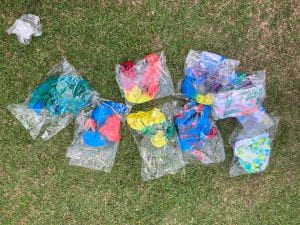 experiences. I have learned that free-handing tie-dye is not very successful (as the dye runs), and that tie-dying complementary colours together make a murky brown colour (Which is the opposite effect to the one I was going for). After this “disaster”, we continued to dye the shirts, hoping for the best, and we packaged them all up to set.
experiences. I have learned that free-handing tie-dye is not very successful (as the dye runs), and that tie-dying complementary colours together make a murky brown colour (Which is the opposite effect to the one I was going for). After this “disaster”, we continued to dye the shirts, hoping for the best, and we packaged them all up to set.
Next up in the process, I rinsed all of the shirts that I brought home with me (with my brother Ethan, who is also in my service group). This took a surprisingly long time, as there was so much dye in the shirts. Then, we put them in the washing machine and hung them up to dry.
 Then, I had to take this messy pile of crinkly shirts (to the right) and iron them. I needed to do this so they would look presentable when we sell them. This was the final challenge that I had faced in this process. Believe it or not… I had never ironed before, so I had to learn to finish making them presentable.
Then, I had to take this messy pile of crinkly shirts (to the right) and iron them. I needed to do this so they would look presentable when we sell them. This was the final challenge that I had faced in this process. Believe it or not… I had never ironed before, so I had to learn to finish making them presentable.

Thankfully, my mom was home and willing to give me a quick crash course on the process. She demonstrated on one of the shirts, teaching me the best way to do the front, back and sleeves of the shirt. Then, I gave it a go. This was a challenge for me as I had never tried ironing before. However, overcoming this challenge left me with newly developed skills (that are very useful in everyday life… especially in university!). It took me a couple of re-dos to get each shirt the way I wanted them, but in the end, I was very proud of myself for this small achievement. My unfamiliar experience resulted in a slightly increased expertise in learning how to iron. I was very proud of the finished results!
She demonstrated on one of the shirts, teaching me the best way to do the front, back and sleeves of the shirt. Then, I gave it a go. This was a challenge for me as I had never tried ironing before. However, overcoming this challenge left me with newly developed skills (that are very useful in everyday life… especially in university!). It took me a couple of re-dos to get each shirt the way I wanted them, but in the end, I was very proud of myself for this small achievement. My unfamiliar experience resulted in a slightly increased expertise in learning how to iron. I was very proud of the finished results!
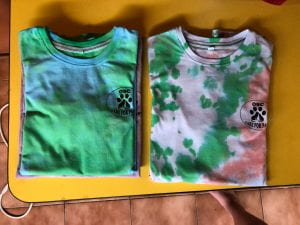
LO4 Show commitment to and perseverance in CAS experiences Students demonstrate regular involvement and active engagement in CAS.
I demonstrated commitment and perseverance in CAS experiences, as this project is one that we (CFP) have been planning for over a year, and we are finally completing the action and doing it. It shows one of the service sessions that we had planned, and what we did on our free time (the dying), as involvement and engagement in both the “Service” and “Creativity” sections of CAS. It ios regular engagement, as my service group has been meeting up at least once a week to plan this beforehand.
LO6 Demonstrate engagement with issues of global significance Students are able to identify and demonstrate their understanding of global issues, make responsible decisions, and take appropriate action in response to the issue either locally, nationally or internationally.
This is demonstrating with the global issue of overpopulation and the bad health of street dogs and cats. This project indirectly helps this issue, as the purpose of dying the shirts is to sell them, in order to raise money for street dogs and cats, so we can (hopefully), do our vaccination and sterilization camp. This used to be an annual camp (before COVID), were we would spend a whole day vaccinating and sterilizing as many street animals as possible, to make sure they have good, healthy lives, and are safe. This issue is very local to Sri Lanka, as there is an abundance of mis-treated, overpopulated and unhealthy street dogs. This fund from this project will go towards helping them get a better life.
